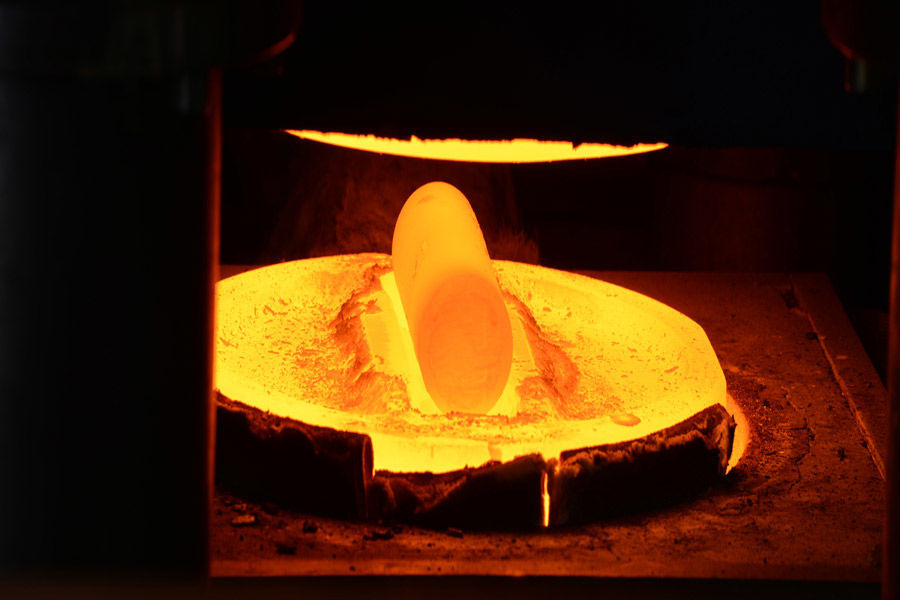Forging metal makes it stronger. Unlike other processes, forging allows you to contour and control the grain direction and size in the metal. This lets you control directional stiffness and strength in your parts. Forging is a common method in which the metal (most commonly steel) is heated up and then shaped using upper and lower dies. The Advantages of Forging. Every process has its pros and cons. Here are a few of the ways that forging could be the method of choice for making some metal parts. Because the grain flow is maintained and the ends of the grain aren’t exposed (like they are in cutting), forging a steel piece can make it more durable. Another benefit to forging is that the heat and pressure can be a great way to work out any defects in the material, like gas pockets (porosity). Between that and the thermal cycling that happens as the part cools and is reheated, you can get some really great quality metal out of this process.
Forging definitely has its limitations. The disadvantage is that the dies used in industrial forging can be really expensive and take a long time to make, especially if the forged part is more complicated. Dies are usually made out of a particular kind of tool steel, which requires rough machining, heat treating, and finishing before it’s ready for use.
You’ll also need a hammer or press strong enough to move the steel, so most shops have an upper limit of around 100 lbs for forged parts unless they’re very basic shapes like shafts, blocks or rings. Essentially, forging is more expensive and it’s harder to make certain shapes with it.
There are advantages of Casting. While forging will give you stronger parts, there are a lot of reasons why casting might be the method of choice. For one, casting is generally much cheaper. Instead of complicated dies, you can make simpler molds. These can be made from a number of materials, but sand is a common and cheap one. Another perk of casting is that you can make much more complicated shapes. With forging, you have to have access to hit the metal. With casting, though, you have much more design freedom. Casting is a great solution for parts with internal cavities, which are usually challenging to make by other means.
But with casting, gas bubbles that cause porosity can make the metal inconsistent or unreliable. All castings will have a certain amount of porosity; it’s just the nature of the process. This is why castings tend to crack under impact or non-compressive forces. All of these pores in the metal are points at which cracks can start and quickly propagate.
Additives to the molten metal can help reduce it, but you’ll never totally eliminate it.
No matter what, you’ll always have significantly more defects within the metal with casting. They can generally handle compressive forces well enough, but they’ll always be inferior if you need something that will handle wear and impact well.
CNY
Back to All Blog Posts
Cast VS Forge Steel
Saturday, August 1, 2020

Comments
Write a Comment Close Comment Form




